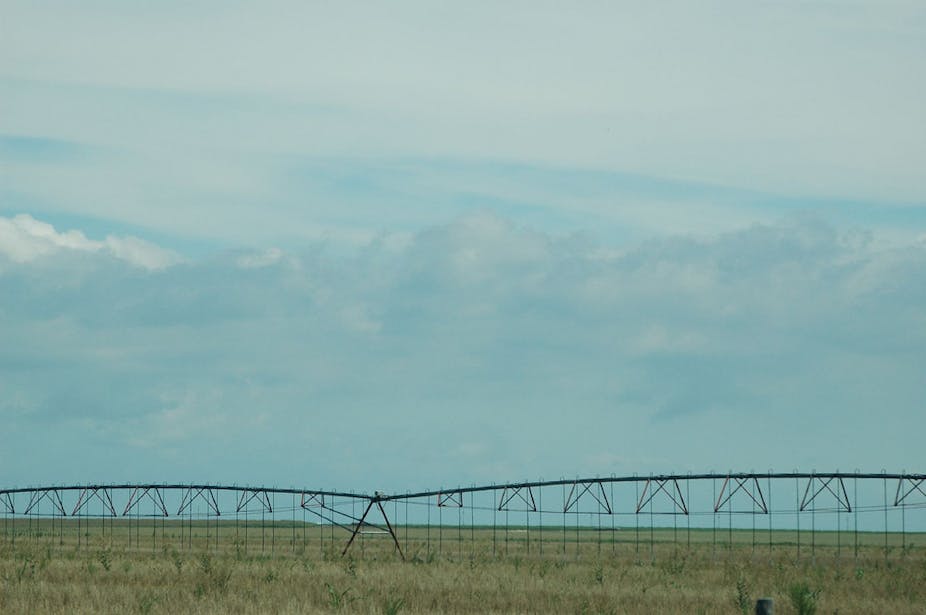Since the MDBA (the Authority) released the long awaited Plan for the Murray-Darling Basin, the response has been both predictable and somewhat muted. Most predictable have been calls for certainty, based on the assumption we can know enough to plan reliably for the future.
But this kind of certainty just isn’t possible for the MDB. The Authority has come to the realisation that it is dealing with what is known as a “wicked problem)”.
Wicked problems are those that have multiple interacting systems – physical, economic and social – a number of social and institutional uncertainties and imperfect knowledge.
These problems cannot be solved by relying on science alone, because it is impossible to define and describe their full nature. These problems are continually evolving. As a consequence no single or definitive optimal policy solutions to wicked problems) can satisfy all the affected parties. Anyone who has kept an eye on the Murray-Darling issue would recognise that description.
Water resource management should be thought of as a wicked problem. With water management there is no clear cause and effect to investigate, no optimal solutions to suggest, no history to follow and no way of resolving the social, political, economic and biophysical complexity. Irreversible climate change, at times poorly defined property rights and the inability to manage trans-boundary water resources all add to this complexity.
Wicked problems do not have a single, optimal once-off solution. They have a temporary solution. And it is a solution that has to change over time in response to changing circumstances. The changing nature of wicked problems and large uncertainties surrounding physical predictions and future policy changes mean we have to take an adaptive approach to the problem.

Those who call for certainty and a one-off solution (usually couched in terms of the need to invest and/or that the river’s health is in such a dire state that it will expire and/or that the science is settled), have misread the nature of the problem. They have ignored its underlying variability. The most important thing the Authority has done is to take a more adaptive approach to the problems in the Basin within the constraints imposed by the legislation and the political environment.
An adaptive approach acknowledges that a long-term view is needed to deal with the problem. This gives time to learn more, and apply that knowledge in managing the Basin’s assets. In particular, it may allow time to determine a set of environmental response functions (those that reveal and quantify the relationship between environmental outcomes and the rate water is applied) for the Basin, similar to those that already exist in the irrigation sector.
At the moment we do not know with any degree of plausibility or acuracy what changes in environmental outcomes will arise from from different river flows. Environmental response functions address this question. These are needed if any reliable assessment of a proposed divertions between any two uses of water are to be made. They are also helpful in assessing the benefits of new techniques that better meet the needs of irrigators and the environment.
With this information, managers can monitor each of the uses water is allocated to and determine the relative “technical” efficiency of deploying water from one use to another. With a little more research, it should be possible to calculate the “economic” efficiency of different water allocations, provided the value of water used in the environment can also be determined.
In a system like the Murray-Darling Basin, where the variability in river flows is so great, the relative technical and economic efficiencies associated with each type of water use will change from one season to another. The Sustainable Diversion Limits and the amount of water allocated to the environment may also change from one year to another or over a longer time.
Finally, allowing the water sector to operate within a market, where environmental flows are traded alongside irrigators’ allocations and the urban sector’s requirements, provides more flexibility. It could help lead to the resolution of this wicked problem.
In attempting to solve the problems in the Basin the first requirement is to think of and conceptualise the problem correctly. Then there is a need to recognise that these types of problems defy an optimal once-off solution. Any partial solution requires some degree of compromise and should be subject to continual review and adaptation over time.
Looking at the sector and its problems in their entirety, learning more about them and having the flexibility to respond to them is the key to dealing with these complex problems. With this draft plan, the Authority is on the right track.

